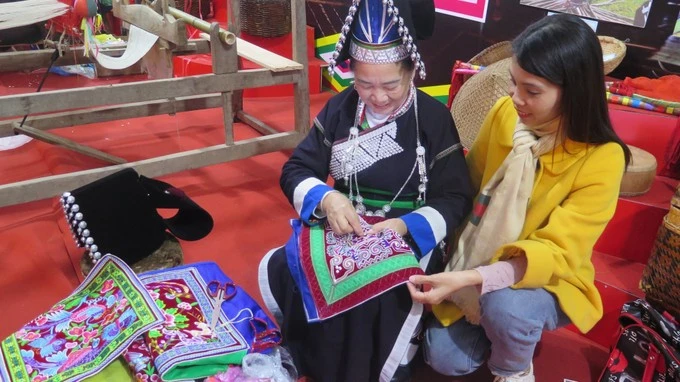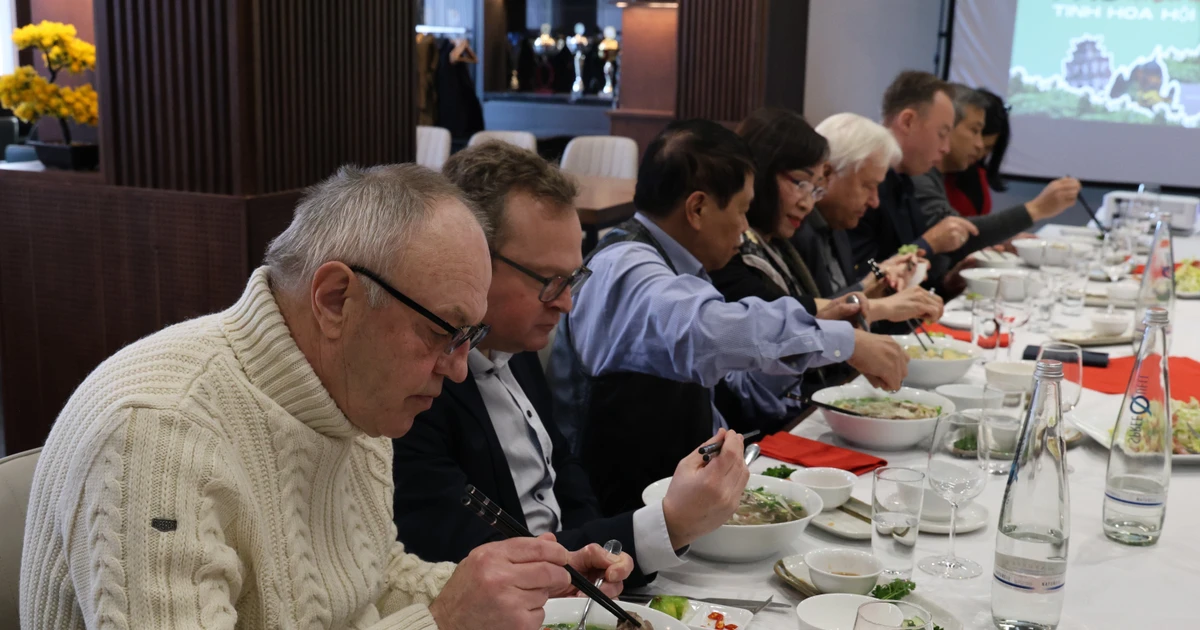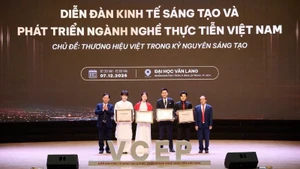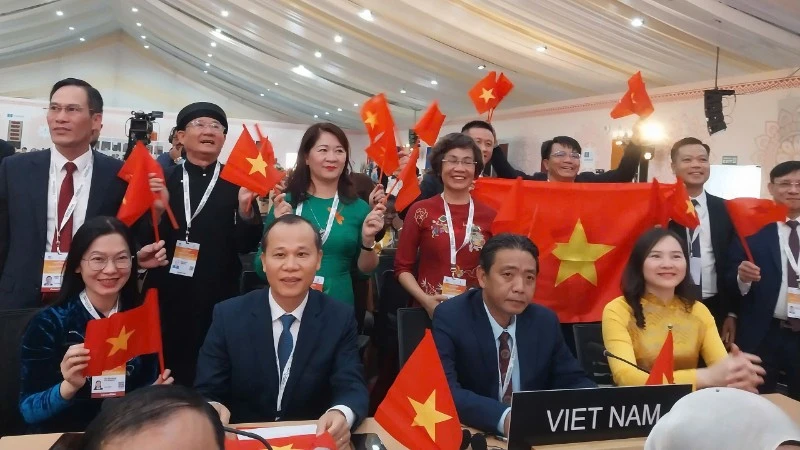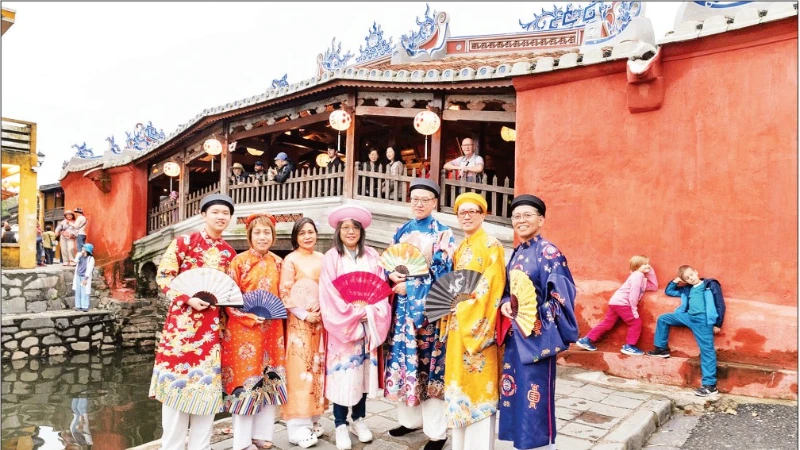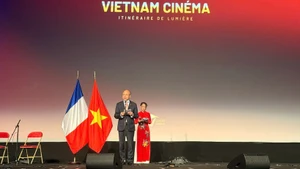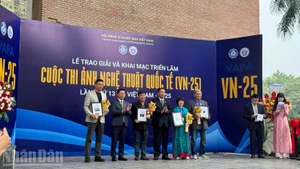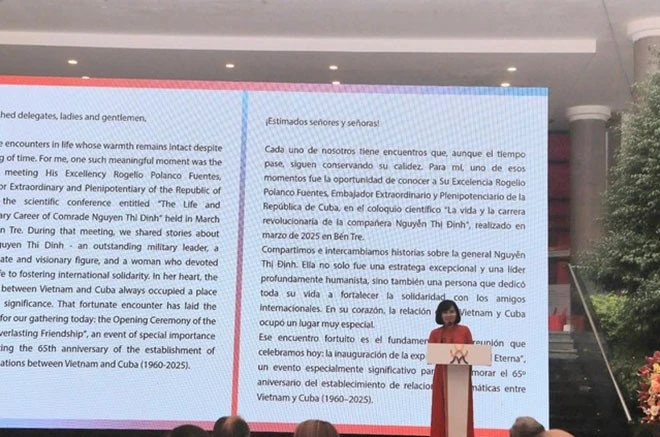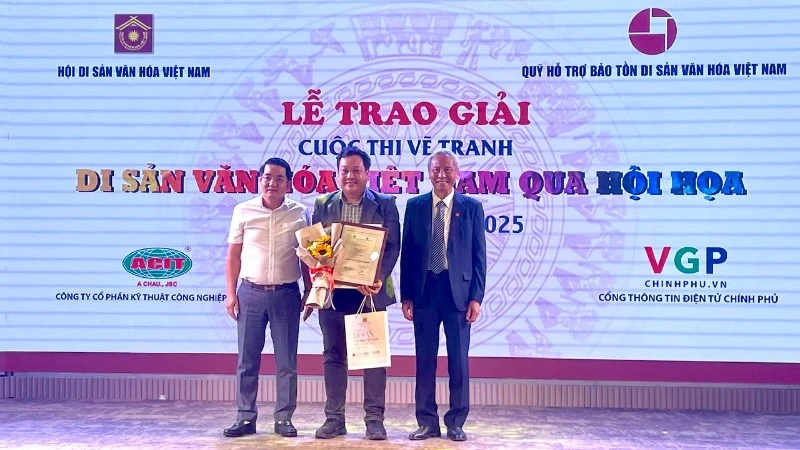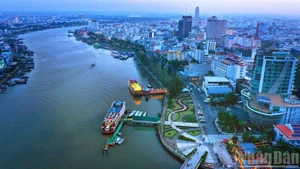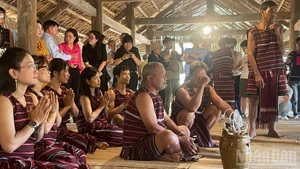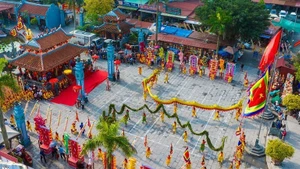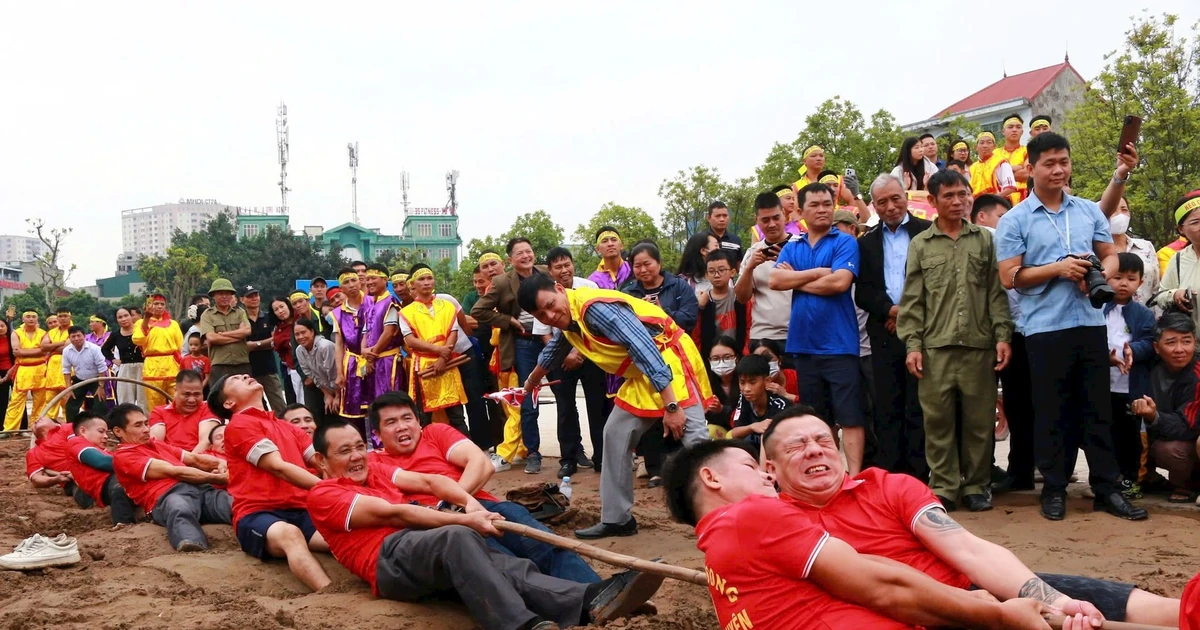The project, which has been implemented by Nhan Dan Newspaper in collaboration with technology partners, by installing Near-Field Communications (NFC) chip panels (wireless connection technology) to promote heritages and boost tourism development.
This April, as the entire nation commemorates the 50th anniversary of the Liberation of the South and National Reunification (April 30, 1975 –2025), the Thang Long Imperial Citadel, a UNESCO-recognised World Heritage Site, has seen a surge in visitors. It served as the General Headquarters during the resistance war against the US. Hanoi is home to 6,489 historical and cultural sites, among which the Thang Long Imperial Citadel is regarded as the most important.
Following the relocation of the capital from Hoa Lu (in present-day Ninh Binh Province) to Thang Long in 1010, the Ly Dynasty began building the city into a worthy imperial capital. While many original structures have not survived the passage of time, remaining surface relics and excavated artefacts at the site vividly reflect the centuries-long cultural exchange. The citadel stands as a unique testament to the fusion of external influences and globally significant philosophies that helped shape the distinctive and innovative identity of Vietnam’s political, economic, and cultural heart.
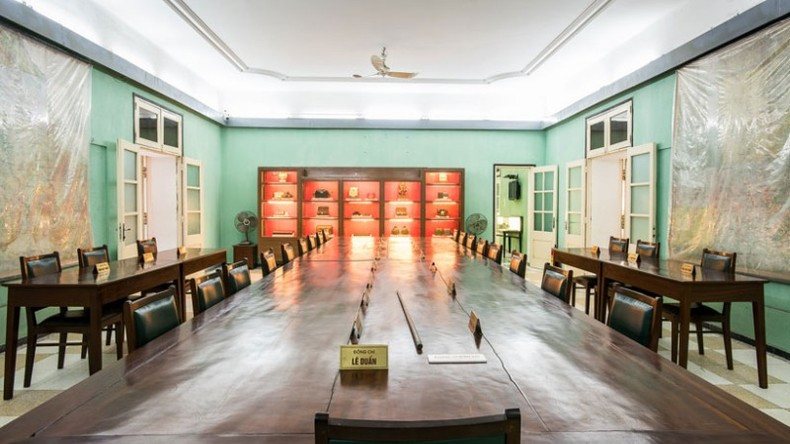 |
| The meeting room at House D67 is meticulously preserved in its original condition. |
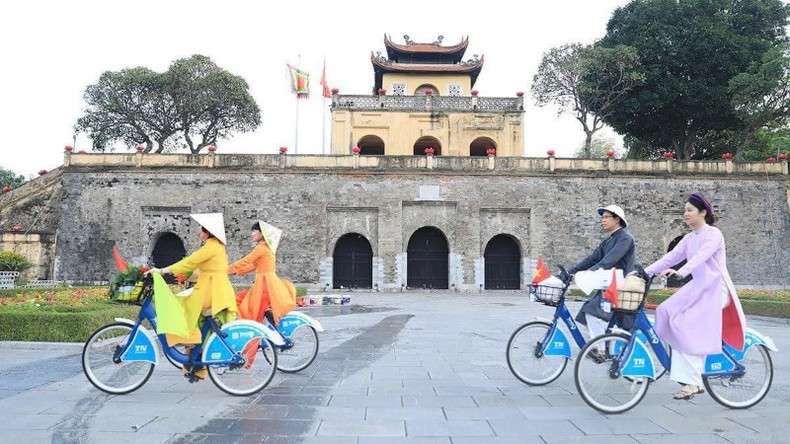 |
| Thang Long Imperial Citadel is one of the most attractive destinations in Hanoi. |
In addition to the remaining above-ground structures such as the Flag Tower, Doan Mon Gate, the foundation of Kinh Thien Palace, and the Northern Gate, the true value of the Thang Long Imperial Citadel also lies in the millions of archaeological artifacts unearthed, as well as in many other hidden cultural layers.
Archaeological excavations have revealed that the earliest architectural traces at the site date back to the Dai La period (the 7th–8th centuries).
During the period of national independence, the overlapping architectural remnants and artefacts, from the Ly, Tran, Le, Revival Le, to the Nguyen dynasties, form a rich and tangible historical record of Vietnamese court architecture and aesthetics.
During the resistance war against the US, as the US air raids on the North grew increasingly intense, the Ministry of National Defence decided to construct a building within Zone A of the Imperial Citadel, known as House D67.
From September 1968 until April 30, 1975, House D67 served as the venue for numerous critical meetings of the Politburo, the Central Military Commission, and the General Command. It was here that key military strategies were devised for Vietnam’s resistance war against the US.
Notably, on the morning of March 31, 1975, the Politburo of the Communist Party convened an expanded meeting, one of historic significance. This meeting laid out the third and final strategic blow of the 1975 Spring General Offensive and Uprising. The resolution was to launch a full-scale offensive to liberate the South as swiftly as possible—ideally within April 1975. The guiding principle was: "Speed, boldness, surprise, and certainty of victory."
Decades have passed, yet the entire system of buildings and underground bunkers has been preserved in its original state, including the Politburo’s meeting rooms and the office of General Vo Nguyen Giap.
As the 50th anniversary of the Liberation of the South and National Reunification approaches, many Vietnamese people have visited this historic site to learn about the General Headquarters of the Vietnam People's Army during the resistance war against the US.
In recent years, the Thang Long - Hanoi Heritage Conservation Centre (the managing unit of the Thang Long Imperial Citadel) has placed great emphasis on digitalisation to preserve and promote the value of this heritage.
Notably, the centre has launched a mobile app related to the Thang Long Imperial Citadel, digitally reconstructed heritage spaces, implemented an e-ticketing system, and organised virtual exhibitions.
To mark the 50th anniversary of the South Liberation and National Reunification, the Thang Long - Hanoi Heritage Conservation Centre, in collaboration with Nhan Dan Newspaper, has installed NFC chip panels at the site.
This initiative aligns with the digital heritage roadmap of the Thang Long - Hanoi Heritage Conservation Centre, making the installation process smooth and efficient thanks to the collaboration with Nhan Dan Newspaper. The NFC chip-embedded panels are placed right at the exhibition area, near the ticket booth, allowing tourists easy access to immersive experiences and heritage discovery.
Alongside the Thang Long Imperial Citadel, the Hanoi Municipal People's Committee has selected two other prominent heritage sites to install NFC chip-integrated panels, including the Temple of Literature in Dong Da District and Hoa Lo Prison in Hoan Kiem District.
The Temple of Literature, built in the late 11th century, is dedicated to Confucius and revered scholars of Confucianism. It also served as Vietnam's first national university, training many generations of scholars and talents for the country over the centuries.
This was officially recognised as a Special National Relic Site. Its system of 82 stone steles has been recognised by UNESCO as a World Documentary Heritage and listed as a National Treasure.
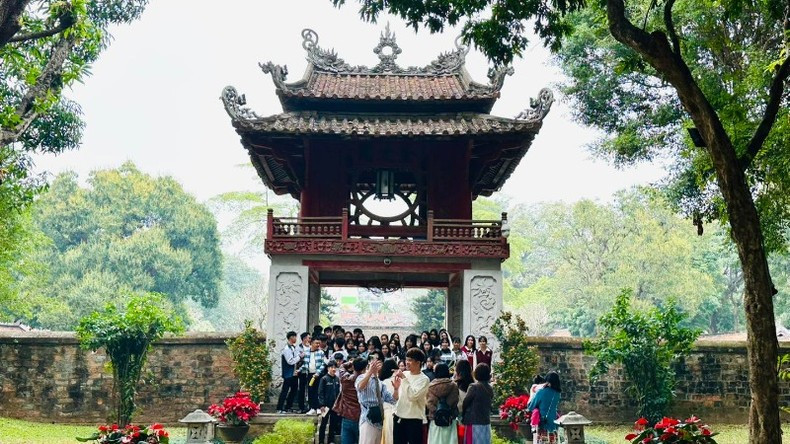 |
| The Temple of Literature has long stood as a symbol of the Vietnamese people’s deep respect for learning and education. |
The Hoa Lo Prison relic site is one of the most prominent among hundreds of revolutionary and resistance sites in Hanoi.
After taking control of Hanoi, the French colonialists built Hoa Lo Prison as one of the most solid prisons in Indochina, used to detain patriotic figures and revolutionary soldiers.
Many senior leaders of the Party and the State were once imprisoned here, including Truong Chinh, Nguyen Duc Canh, Tran Dang Ninh, and Hoang Van Thu.
The revolutionary prisoners turned the prison into a school where they nurtured their revolutionary spirit and deepened their love for the homeland. Today, Hoa Lo Prison has become one of the most popular historical tourist attractions in the capital.
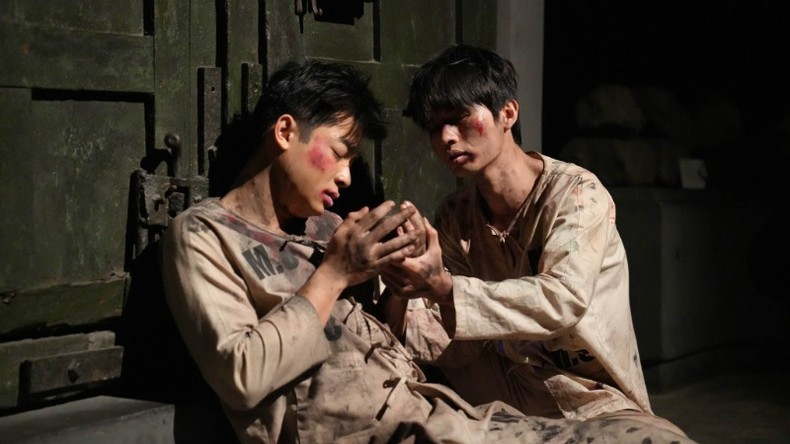 |
| Hoa Lo prison relic site has now become a place that ignites the revolutionary spirit among future generations. |
The "Love Vietnam So Much" project, initiated by Nhan Dan Newspaper, has been implemented in various provinces and cities across the country to commemorate the 50th anniversary of the South’s Liberation and National Reunification. It has been warmly welcomed by the community.
While visiting Thang Long Imperial Citadel, Dang Hong Van, a tourist from Da Nang, shared: “When we checked in via the NFC chip panel, we were redirected to a website that provided all the essential information about the heritage site. In addition, our phones displayed the number indicating how many people had checked in before us. We could also share moments and record the exact date of our visit. It was such an exciting experience.”


